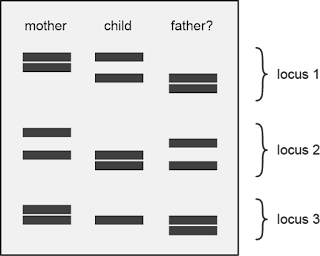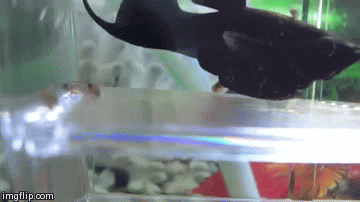Biology concepts – twins, superfecundity, superfetation, hormones, reproduction
True, in some cases a lot of money might be involved in stud fees and in selling purebred pups, but that just goes to show how crazy things can get when pets are involved. One case concerned a female Shih Tzu was bred to two different males in the same estrus cycle – why they did that I have no idea. What was dumber, the two male dogs, a Shih Tzu and a Coton de Tulear, look very similar.
When the pups were born, each owner claimed that they were the pups of his male dog. A DNA fingerprinting method called barcoding was new at the time, and was used to determine that one pup came from each male.
Giving birth at one time to offspring fathered by more than one male is called superfecundation(super = beyond, and fecund= fruitful). Dogs, cats, and many other mammals that have litters are capable of superfecundity; although it is usually seen in stray animals that may mate several time in a single day. Raccoons have had superfecundation litters, and I’m sure it has happened with other animals as well, but whose watching.
With superfecundity in dogs as an example, let's ask our last two questions concerning the definition of twins. We saw in the last two posts that twins can be born months apart and don’t even need to be of the same "race." Now let’s ask – do twins have to be conceived at the same time, or even by the same father?
, when the eggs are fertilized by the same male, but at different times of the same cycle.
The question that immediately popped into my mind when read about homopaternal superfecundation was – how would you know? Run of the mill dizygotic twins would be from the same cycle, the same father, delivered at the same time (usually). How would homopaternal superfecundation twins look any different? How could you tell the two situations apart? And if you can’t tell them apart, how do you know if they can happen in humans?
Consider the following possibility: a husband and wife undergo in vitro fertilization because they have not been able to have a baby in several attempts. Her eggs and his male gametes are used. Two embryos are transferred and a several weeks later they do ultrasound to see if they implanted and are developing. Low and behold – there are five fetuses in there!
Is this proof of superfecundation? No, but the couple did attempt to make a baby the natural way again after the embryos were transplanted – no, that’s not proof. Maybe the two transferred embryos split into a set of twins and a set of triplets. We know that it is possible from our discussions of monozygotic twinning rates during assisted reproductive therapies (see this post).
Dizygotic twins and trizygotic triplets don’t have the same chromosome profiles, just like regular siblings do not. Random assortment in the production of gametes means that the odds of two fetuses having exactly the chromosomes is millions to one (see this post). Monozygotic twins or triplets will have the same genetic profile – that’s sort of the definition of monozygotic multiples (unless they are chimerics, see this post and this post).
So, if all the kids have the same mother and father and none are monozygotic multiples, then where did the other three come from? Yep, a fertilization by the father separate fromthe IVF procedure. This is proof of homopaternal superfecundity. Do you think this is just a hypothetical case and the odds are too long to ever have it ever happen? Well it did, not once, but twice in the literature of the last 15 years, once in 2001 and once in 2011.
Remember that IVF isn’t just an egg harvest and return. Lots of hormones have to be given to the woman to make her ovulate several eggs and to prepare the uterus for implantation after the embryo transfer. This makes it possible for her to ovulate again, and makes it more probable that any fertilized eggs released later might implant and develop as well. And there you have it.
A study in 1993 suggested that superfecundity might be responsible for up to 0.5% of dizygotic twins, but that would be a hard thing to prove. The cases that come to light are usually when a question of paternity arises, and that arises much too often.
The second possibility is that eggs can be fertilized by gametes of two different males; the term is heteropaternal superfecundation. There are several cases where this has been proven by genetic testing (1997 and 2000), and in ancient Greek accounts, it has been cited as the reason for any set of twins – they were an untrusting, and apparently, philandering lot.
But you can see how one might assume that there are two dads – remember our discussion of different "race" twins a few weeks back – one paper states that in the case of black and white twins, heteropaternal superfecundity has to be ruled out before a case of different race twins can be proposed. And why does it matter – paternity suits show that heteropaternal superfecundation is present in 2.4 % of the cases that come to court concerning multiples.
Have you ever heard of superfetation? It is like superfecundity, but stretched out through time. To define it sounds like a riddle – can a pregnant woman get pregnant? Believe it or not, the answer is yes.
After an egg is released from the ovary, the follicle becomes the corpus luteum (see this post). This structure releases progesterone hormone which acts on the hypothalamus, so does the progesterone released from the placenta. In both cases, the progesterone down-regulates the action of the hypothalamaus on the pituitary, so the pituitary releases less hormone that stimulates ovulation in the ovary.
Basically, the reproductive system is telling the brain, "Wait a minute, we may have an implanted embryo, don’t release any eggs in the next estrus cycle." This is why women who are pregnant more often have eggs and will ovulate longer in their life; they go nine months without releasing any eggs every time they are pregnant.
But if there is an over abundance of a hormone called human chorionic gonadotropin (hCG), the signal from the brain may get overridden. HCG is the only hormone known to stimulate ovulation in a woman who might be is releasing progesterone from the placenta and follicle.
see last week’s post) or growth discordance might be mistaken for superfetation.
Superfetation occurs in other mammals. Placental fish– yes, some fish have placentas and give birth to live young instead of releasing eggs into an underwater nest – are notorious for having immature eggs fertilized while they are carrying a brood.
In brown hares (Lepus europaeus), the same thing occurs; the hypothesis is that it is a way to increase reproductive success in one breeding season for animals that don’t know how long they have before something big might eat them. Still, it has been hard to document superfetation in humans.
In 2007 there was a case of growth discordant twins, but it was the smaller one that was the right size for the gestational age – sounds promising. And in 1999 there was a case where the ultrasound early in the first trimester shows very different sized embryos. Usually growth discordance wouldn’t be seen until much later. The predicted gestational ages for the two embryos differed by four weeks. hmmmm
And just to blow your mind a bit more – consider a case of heteropaternal superfecundation where the two embryos merge either totally or partially to create chimeric(s). Could you actually end up with a person who has two biological fathers?
In the next weeks, we go way back into the vault to look at a couple of posts about Halloween. It turns out that nearly everyone is a vampire - and then we'll see all the different ways one might end up being buried alive.
For more information or classroom activities, see:
Superfecundity –
Superfetation –






